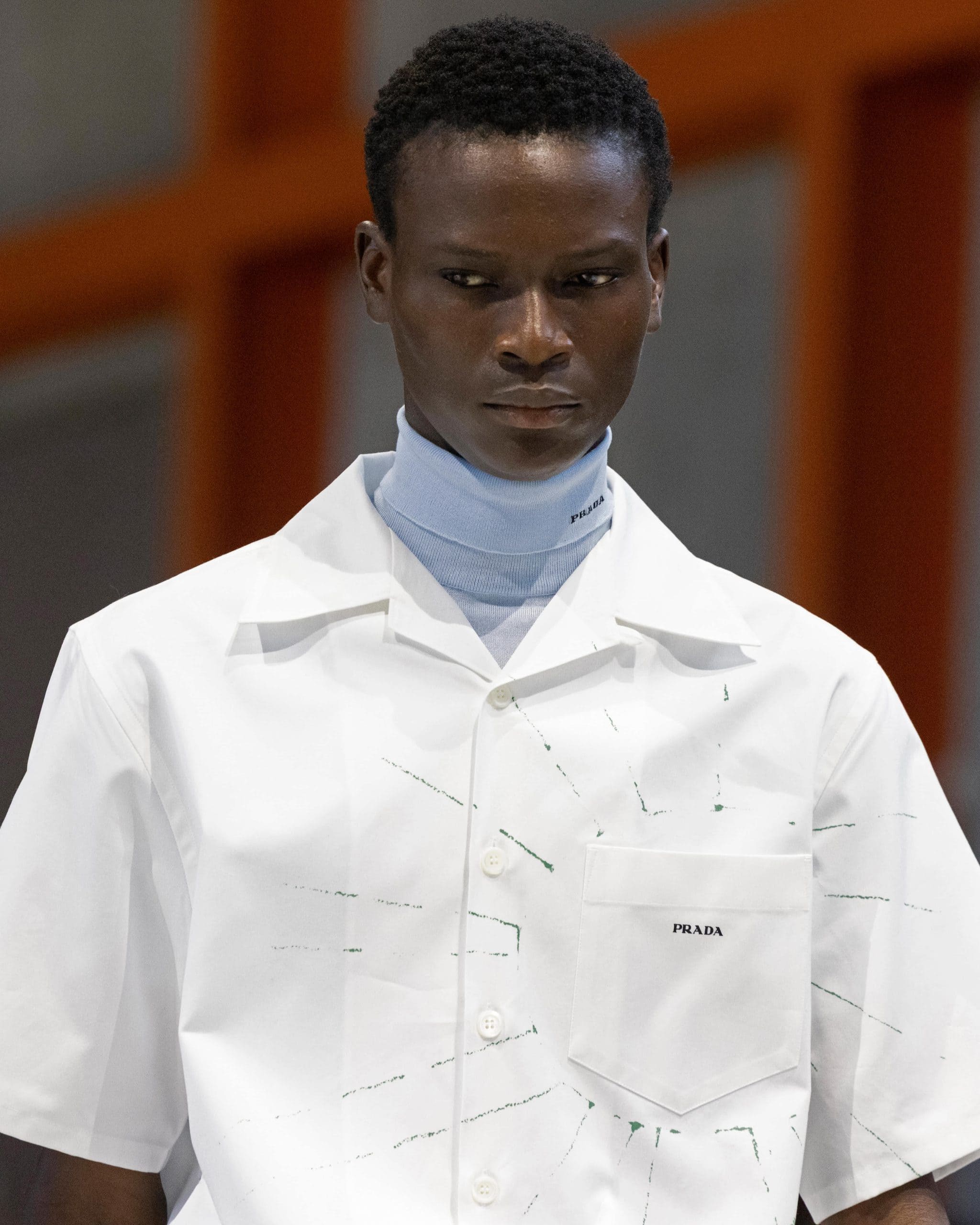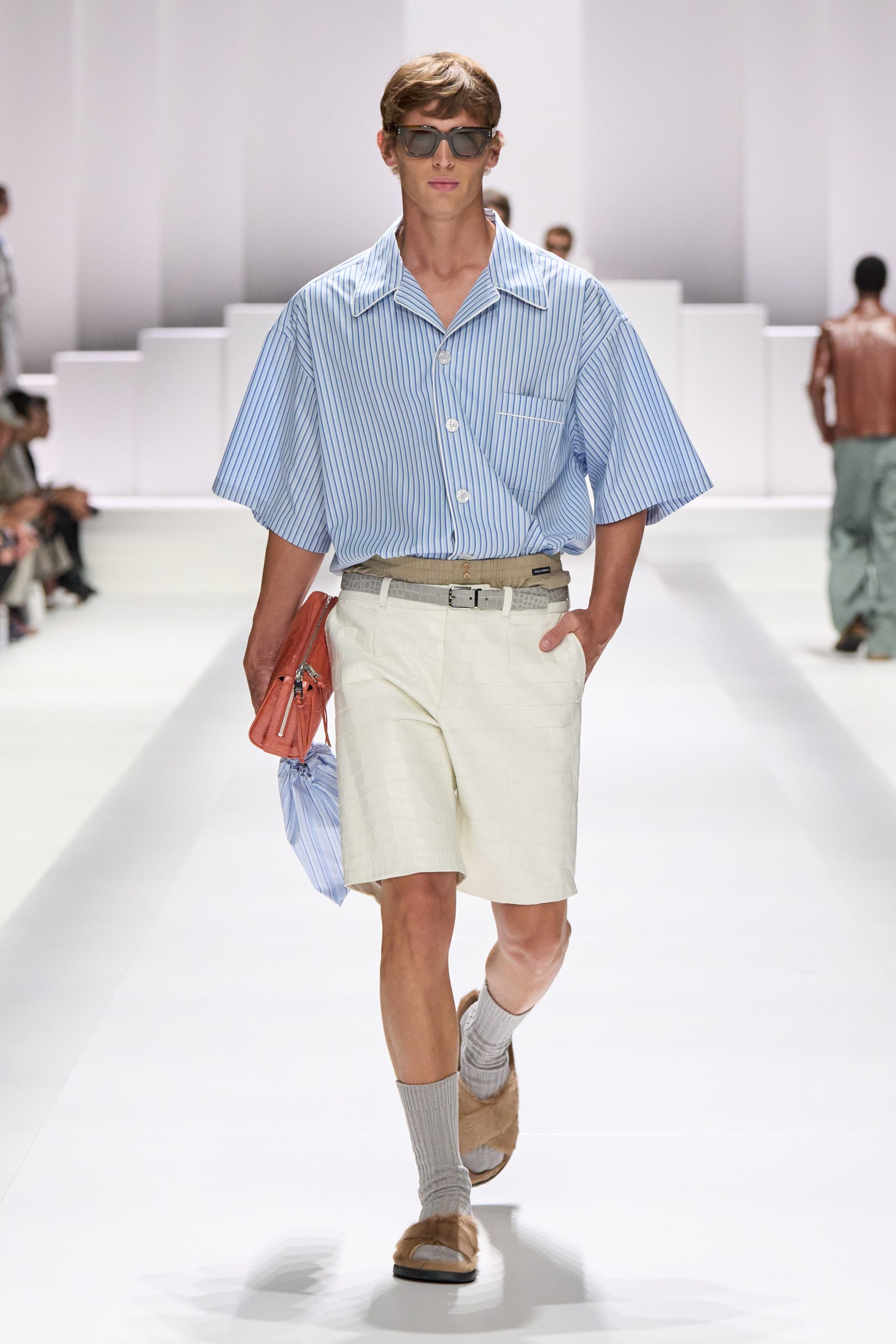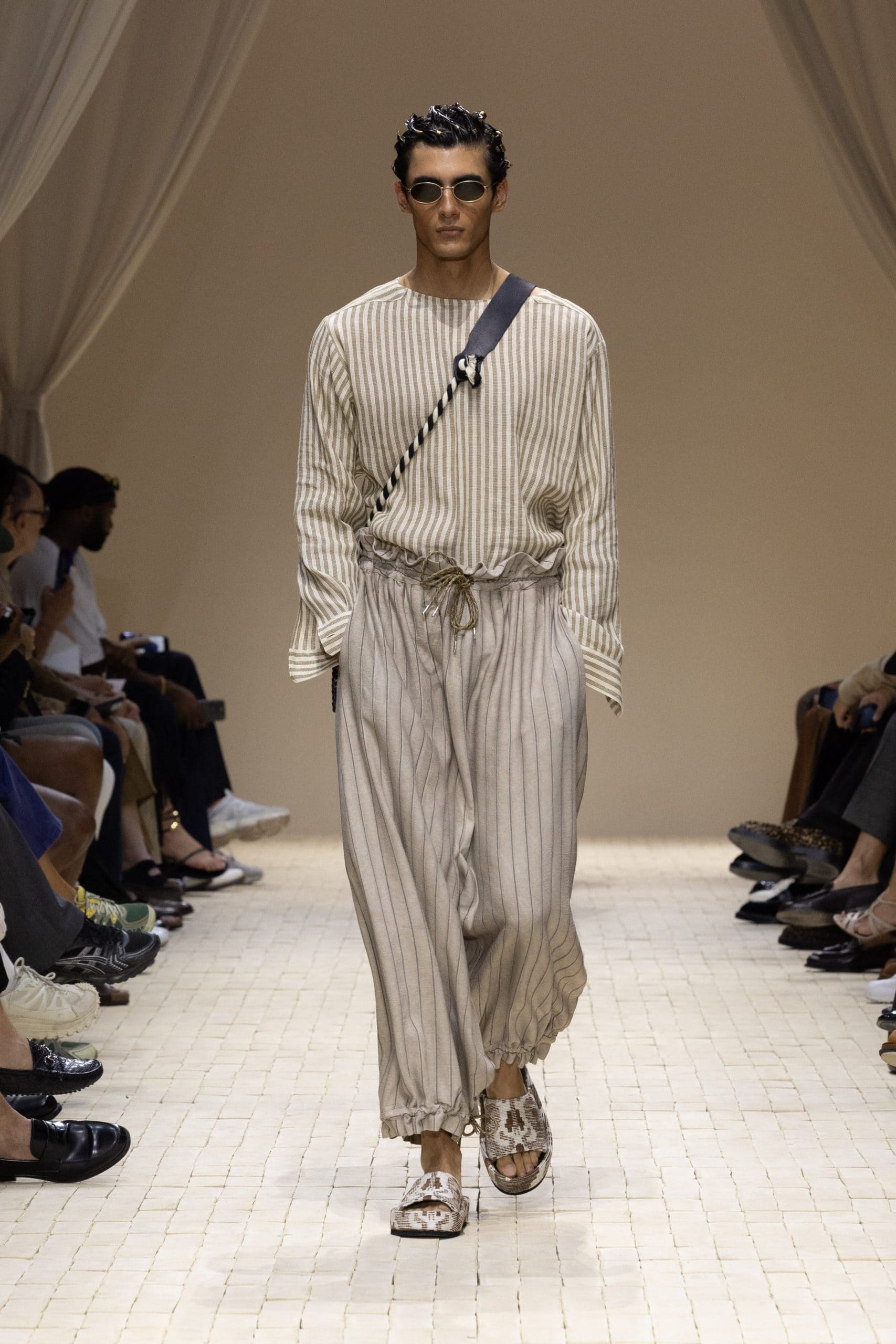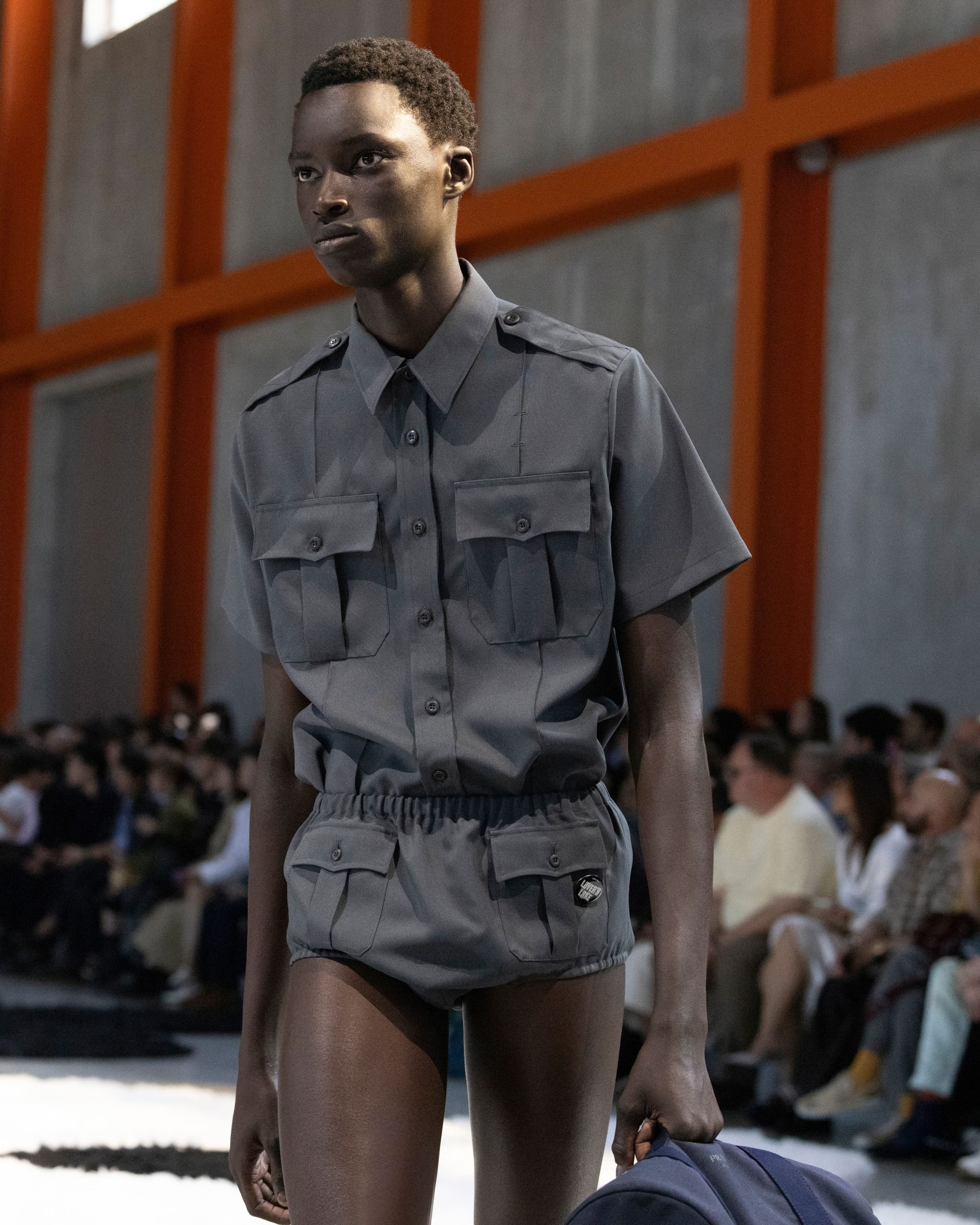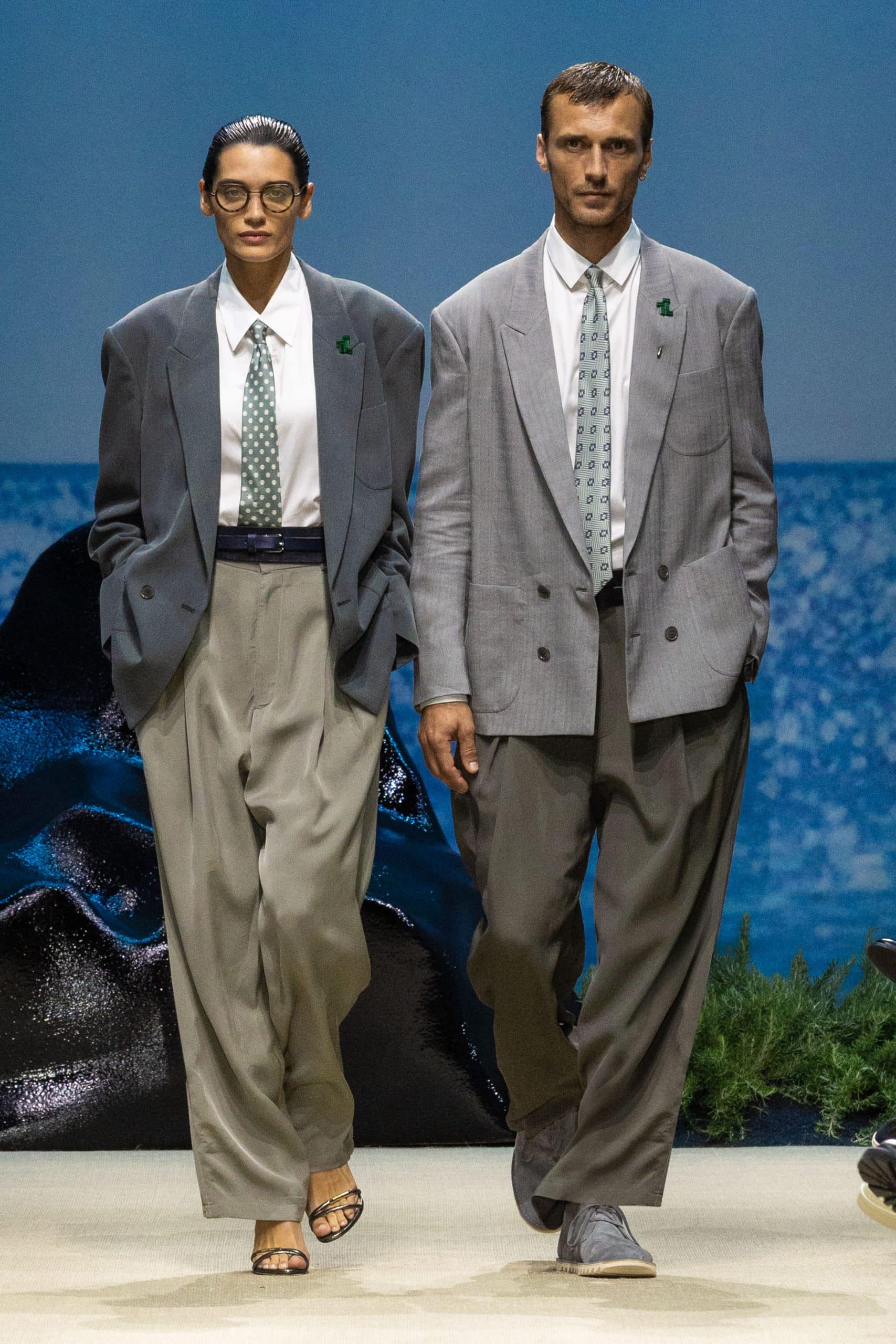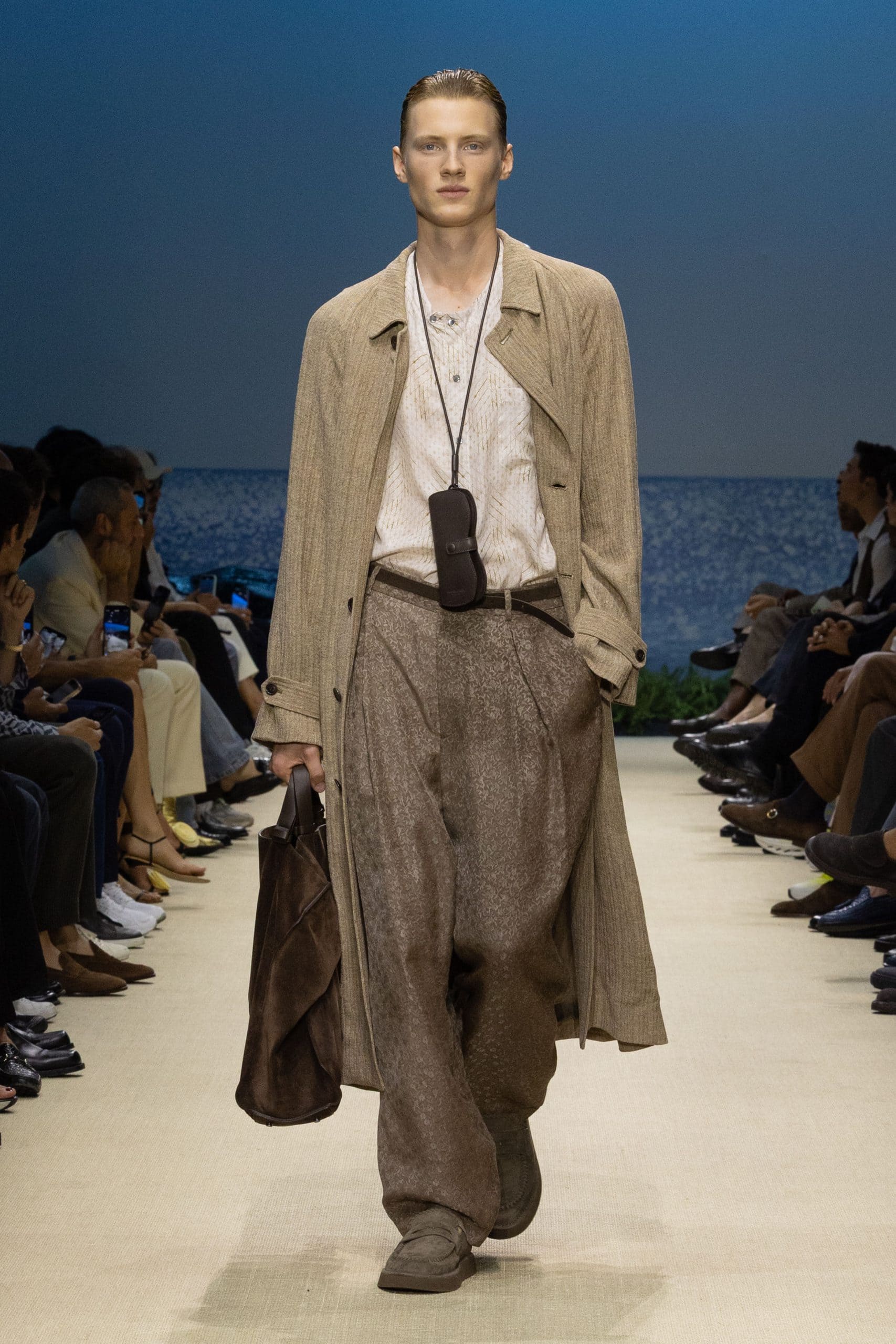Milan is burning. It’s the opening line and the prevailing sensation — literal, metaphorical, sartorial. The city shimmers under a punishing sun, and with it, the usual choreography of fashion shows becomes a study in silks, hand-held fans, and linen rendered almost useless.
“It’s only June,” attendees murmur, with the heat-induced camaraderie of trench soldiers. Everyone predicts worse to come. The planet — in many different ways we won’t tap into — simmers; the catwalks, too, ignite.
And yet, within the furnace, the machinery of fashion spins defiantly on. At the intersection of crisis and commerce, designers in Milan (and soon, Paris) are proposing their visions not in a vacuum, but amid the exhaust of something bigger.
We watch them contend — some with sincerity, some with glitter — with the question of what clothes can do, should do, or at the very least, appear to mean right now.
Over the past few days, the runways have offered both shelter from and a mirror to the burn: a season of whispered nostalgia, stark pragmatism, rebellious sensuality, and, in a few rare cases, actual change.
DOLCE & GABBANA
Dolce & Gabbana stayed firmly in their lane this season—and it worked. Pajamas, a longtime staple of the brand’s archives, returned not as gimmick but as gospel: crafted in crisp cotton, cut with ease, and styled with the kind of calculated nonchalance that suggests deep conviction. There were no fashion acrobatics here, no chase for relevance through borrowed codes. Just Dolce doing Dolce—with unapologetic clarity.
The pajama, in all its familiar forms—striped, piped, drawstringed—was the protagonist. Worn under roomy bombers, double-breasted blazers, or trailing silk dusters, it exuded that peculiar Italian confidence: the belief that what you wear at home can be elevated to the street with the right posture (and a little embroidery).
And yet, there was a whisper of something else in the air. Some looks were styled nodding toward the Miu Miu method of dressing down to dress up. But unlike brands that remix and reference to find an identity or define a new moment, Dolce & Gabbana have the rare privilege of a visual vocabulary so strong it doesn’t need outside assistance. One wondered, briefly, why they reached for someone else’s spice rack when their own pantry overflows.
Still, it all hung together in a kind of decadent coherence. The palette was subdued—celeste, panna, chocolate—with explosions of leopard and the sparkle of hand-beaded crystals by night. Pajamas stepped out into the Milanese heat in sponge slippers and sunglasses, parading down Viale Piave like it was their living room.
“It’s instinctive,” the designers said. And it is. But it’s also deeply considered. Because when Dolce & Gabbana remember who they are—and resist the urge to dress like someone else—they don’t sleepwalk through fashion. They wake it up.
EMPORIO ARMANI
For the first time since 1975, Mr. Armani was not in the building. But even in his absence, the show bore his fingerprints.
It began with EA7 activewear, a burst of glossy, piped nylon on marathon-ready bodies. Then came the Emporio Armani collection proper, and with it, a kind of cultural voyage: embroidered duffle bags reminiscent of Moroccan carpets, silken tunics, feathered mules, elephant-print smocks, and plissé trousers that rippled like desert wind. The house’s press note cited a curiosity for global traditions—Africa, Central Asia, the un-Western world—as a guiding principle. Whether or not all these references were perfectly placed, they signaled a will to look outward, and in some ways, to loosen up.
And then there was the suiting: soft, effortless, rooted. Tailoring that, even after all the travel, brought us back to where Mr. Armani is most at home.
What stood out most was not the scope but the consistency. The message wasn’t about trend or novelty, but about expansiveness with restraint. Giorgio Armani, ever the conductor, orchestrated a show from afar that still sounded like him.
PRADA
In the hushed vastness of a stripped bare Deposito at the Fondazione Prada, Miuccia Prada and Raf Simons staged a show that felt more like a gentle exhale than a fashion spectacle. “Calm, nice, gentle,” Mrs. Prada said backstage, summing up a collection that pivoted away from provocation and towards, well, sense.
Here, disarmament was the mode: no architecture, no shock, no manifesto. The first look, a white camp shirt bearing a watercolor sunrise, layered over a baby-blue turtleneck and anchored by bloomer shorts with poppered utility pockets, set the tone. From there, the show unfolded in washed-out pastels, shapeless silhouettes, and clothes that felt lived in, even before they were worn.
There were cotton trousers Mrs. Prada called “more difficult than complicated things,” rendered with such clarity of cut they almost disappeared into themselves. Vinyl biker jackets gleamed like candy wrappers. Crumpled leather coats, plimsolls, and minimal knits nodded to classics without fuss. Even the trickier pieces—a submariner’s sweater with fringe, skirt-length shirts, and daisy-printed smocks—carried a strange, soft conviction.
There was talk of childhood, of instinct, of resetting. Simons called it the “easiest collection I’ve ever done.” Prada interrupted: “Everything worked with everything.” Indeed, the clothes spoke not of restraint but of liberation from the need to impress—designs without ego, just a quiet joy in their construction.
The soundtrack murmured a line from the KLF’s 1990s utopia: “We’re justified and we’re ancient.” It fit. This wasn’t a collection of ideas. It was a collection of sensations—sun, land, air. It asked nothing and explained little. But in the cluttered now, that in itself felt like a radical move.
GIORGIO ARMANI
There was something quietly momentous about Giorgio Armani’s Spring/Summer 2026 show. Not because the designer was absent, but because, even in his physical absence, the show felt fully, unmistakably like him. In fact, as the house nears its 50th anniversary, it’s clear: Armani doesn’t follow the times. The times come back around to him.
On the runway, Armani’s language—minimalist, textural, Mediterranean—spoke with renewed clarity. Inspired by his beloved Pantelleria, the show unfolded across a volcanic palette of matte blacks, dusty stone, deep marine, and bougainvillea pinks. Woven palm motifs, wave-rippled textures, and bags in faux sharkskin or rattan read like postcards from a summer that values silence over spectacle.
As with this weekend’s Emporio show, Leo Dell’Orco took the bow on Armani’s behalf, but the master’s touch was evident throughout: collarless jackets cut just so, silk Nehru shirts tied with diagonal knits, leather blousons that nodded subtly to his 1970s beginnings. Even the couple looks—a man and a woman styled as quiet mirror images—felt like a gentle echo of American Gigolo’s Giorgio-for-everyone legacy.
And while much has been made of the renewed interest in Armani’s aesthetic it’s worth noting that the designer himself is unmoved by trends. It shows. In a fashion world obsessed with novelty, Armani continues to offer a masterclass in refinement. If the future of menswear lies in elegance with meaning, then it’s not just that Armani is still relevant. It’s that he may have been ahead all along.
